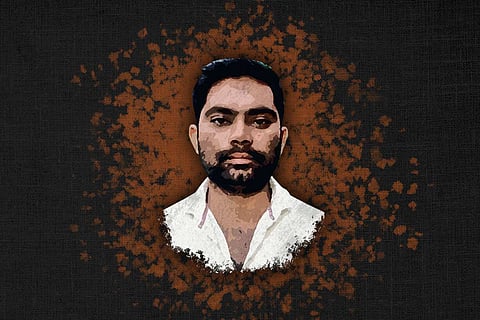

This is part 2 of a three-part series on the Gauri Lankesh murder. Read part 1 here and part 3 here.
At the age of 20, Parashuram Waghmore had dropped out of his B.Com course in a college in Raichur, and returned to his hometown of Sindagi where his family lived. A body-building enthusiast, Parashuram found employment with his uncle, who ran a utensil shop in the town. Young and yearning to do something more with his life, Parashuram readily agreed when a group of Sri Ram Sena members approached him to attend one of their meetings on protecting the Hindu religion. This was in the beginning of 2012, and in just a couple of weeks, Parashuram was so convinced by the group’s ideology that he was part of a team that hoisted a Pakistan flag outside the Tehsildar’s office in Sindagi, inciting a communal clash in the town.
Parashuram, along with his team, tried to make people believe that the flag was hoisted by Muslims. He was arrested for causing a communal clash, and spent three months in jail. But his time in jail did not deter him from pursuing his newfound calling for violent Hindutva after he was released. On the contrary, he found active encouragement from Hindutva extremists who were scouting for people to join them.
One such recruiter was Sujith Kumar alias Praveen from Karnataka, a member of the Hindu Janajagruti Samiti (HJS), an offshoot of the Goa-based hardline Hindutva group Sanatan Sanstha. Sujith, known to Parashuram as Praveen, was the scout for the team being put together by Amol Kale for the assassination of journalist-activist Gauri Lankesh.
Parashuram was recruited into the assassination team in 2016. At this point, the body-building college dropout did not know who Gauri Lankesh was or why she was being targeted. Sujith had been grooming the young man for several years by then, and introduced him to Amol Kale — known to Parashuram only as ‘Bhai Saheb’.
According to a signed confession by Parashuram Waghmore given in police custody, which is part of the 10,000 page chargesheet filed by the Special Investigation Team (SIT), Amol Kale convinced Parashuram that it was his duty to kill Gauri Lankesh for her anti-Hindu views. “A country where farmers, women, saints, soldiers and the holy cow cannot lead a peaceful life will always be in the grip of chaos,” Amol reportedly told Parashuram to convince him to take up the mission.
As the trial in the Gauri Lankesh case progresses in a Bengaluru court, what has emerged is that the group behind Gauri’s killing did not assemble because they wanted to murder her — they came together years earlier in order to identify ‘deshdrohis’ (traitors), eliminate them, and establish a ‘Hindu Rashtra’.
TNM is doing a series of stories on the Gauri Lankesh assassination case based on the chargesheet which is in Kannada. It is 10,000 pages long, spread over 15 volumes, and has the statements of the 17 men arrested for the journalist-activist’s murder. What motivated these men to come together? Why did they target Gauri Lankesh? Was it for money or ideology that Gauri was killed?
Part 2 is the story of how Gauri was killed – told through the story of Parashuram Waghmore, a college dropout turned Hindutva supporter who ultimately fired the bullets that killed Gauri Lankesh.
The chargesheet in the Gauri Lankesh murder names 18 men — from mastermind Amol Kale (alias Bhai Saheb) to Bharath Kurane (alias Tomatar) who cooked for Gauri’s shooter and a few other associates while they were camped in Bengaluru. The affiliations of the 18 men were varied — some belonged to Sanatan Sanstha, others to HJS, and yet others to smaller Hindutva outfits like Shiv Pratishthan Hindustan.
Statements given by two key accused in the Gauri Lankesh murder case — Amol Kale and Amith Degwekar — reveal that it was a man called Shashikant Rane who started putting together the group that targeted rationalists and writers at least nine years before Gauri Lankesh was killed. The group’s first victim was Narendra Dabholkar in 2013. This group was initially led by Virendra Tawde, alias Bade Bhai Saheb, until his arrest in 2016 by the Central Bureau of Investigation in connection with Dabholkar’s murder. The CBI told the Bombay High Court earlier this year that Tawde intended to eliminate people who he considered anti-Hindu, and said that releasing him is a threat to society.
The members of the group were trained in the use of pistols and making country bombs, according to investigators.
Following Tawde’s arrest, it was Amol Kale who revived the group, taking over as its commander and overseeing the addition of new recruits handpicked by his aide Sujith. His first target was Gauri Lankesh, the firebrand journalist-activist from Bengaluru, who edited the Kannada tabloid Gauri Lankesh Patrike.